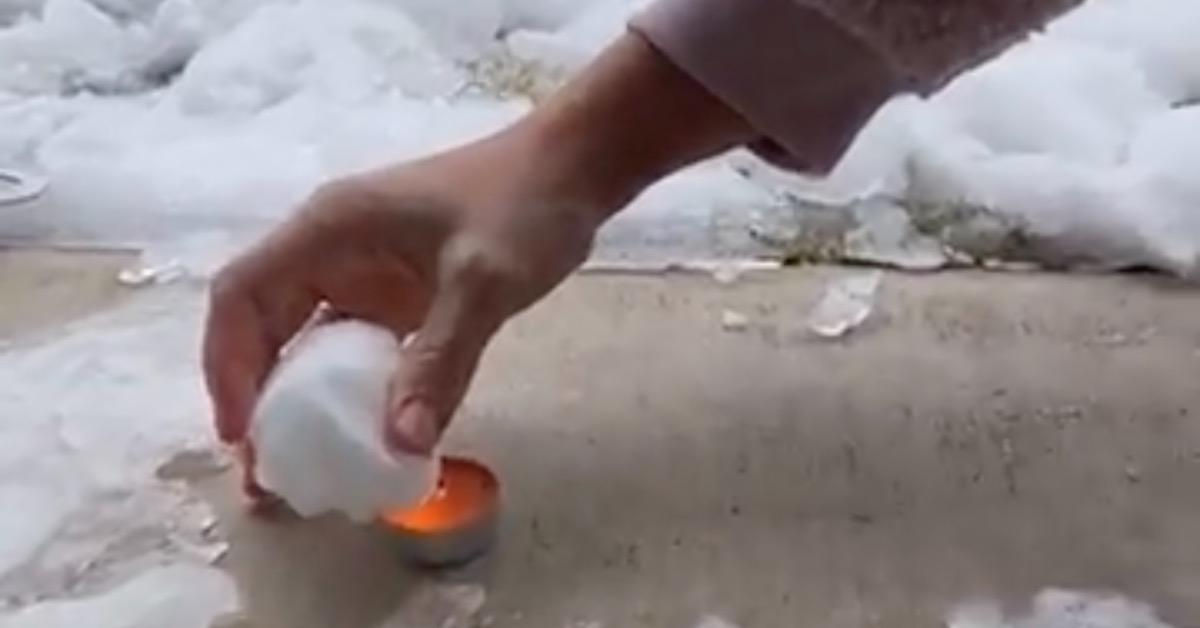No, the Snow in Texas Isn't Fake, but Some TikTok Users Want You To Believe It Is
Published Feb. 22 2021, 4:35 p.m. ET

While Texas continues to deal with the numerous infrastructure problems birthed from the freak polar vortex snowstorm that barraged the state, residents are still looking for answers as to why the storms transpired in the first place. Within that group, some have gone to even further lengths and are questioning the legitimacy of the storm itself, claiming that the record snowfall in Texas wasn't natural.
Thanks to such inquisition, a few viral hashtags have popped up on TikTok showcasing videos perpetuating the notion that the snowfall in Texas is fake, with some users even going as far as attempting to burn the snow for proof. So, what exactly is the Texas fake snow conspiracy trending on TikTok, and is there any truth to it? Here's an analysis of it all.

The Texas fake snow conspiracy on TikTok is an easily disproved phenomenon.
Some TikTok users have been posting videos of themselves lighting balls of snow on fire with lighters and candles, only to produce black soot on the snow instead of creating a pool of water. The trend, which you can explore by searching the hashtag #governmentsnow on TikTok, has already accumulated tons of views and spouted plenty of homegrown conspiracy theorists also looking to experiment with the snow, only to find the same results.
Although there are many videos on the site perpetuating the notion that the recent snowfall in Texas was fake, there's actually a very simple explanation for the phenomenon seen in the videos.
According to Slate science contributor Phil Plait, who made a video explaining a similar phenomenon in Atlanta during a freak snowstorm in Feb. 2014 that caused citizens to ask similar questions, the TikToks are easily explained with a bit of knowledge you may have learned in your seventh-grade science class.
"As the snow melts, the remaining snow absorbs the water. That’s why it doesn’t appear to drip; the snowball becomes a slushball," Phil explained. The process he is detailing is called sublimation, which is when a substance passes from a solid state directly to a gas, skipping the liquid phase.
Phil says videos like these are a classic case of confirmation bias.
"Lots of people made videos showing the snowball not dripping so it looks like it’s not actually melting, but this is a classic case of confirmation bias," Phil went on to say in his detailed video, "They only tested this partway. They didn’t finish the test by letting the snowball actually melt!"
Beyond that, the black marks visible on the snowballs seen in videos after being scorched aren't actually due to the snow burning, but due to the butane in the lighters reacting with outside chemicals. Phil describes it as, "When you burn [snow], the molecule reacts with oxygen in the air, breaking the bonds between atoms, and reforming new molecules." What's left after the fact is reformed carbon molecules, visible to the naked eye as soot, hence the so-called "burn marks."
If the videos were to have continued on longer, viewers would have indeed seen the snowballs completely melt, exactly as expected. In other words, nothing to see here, folks!